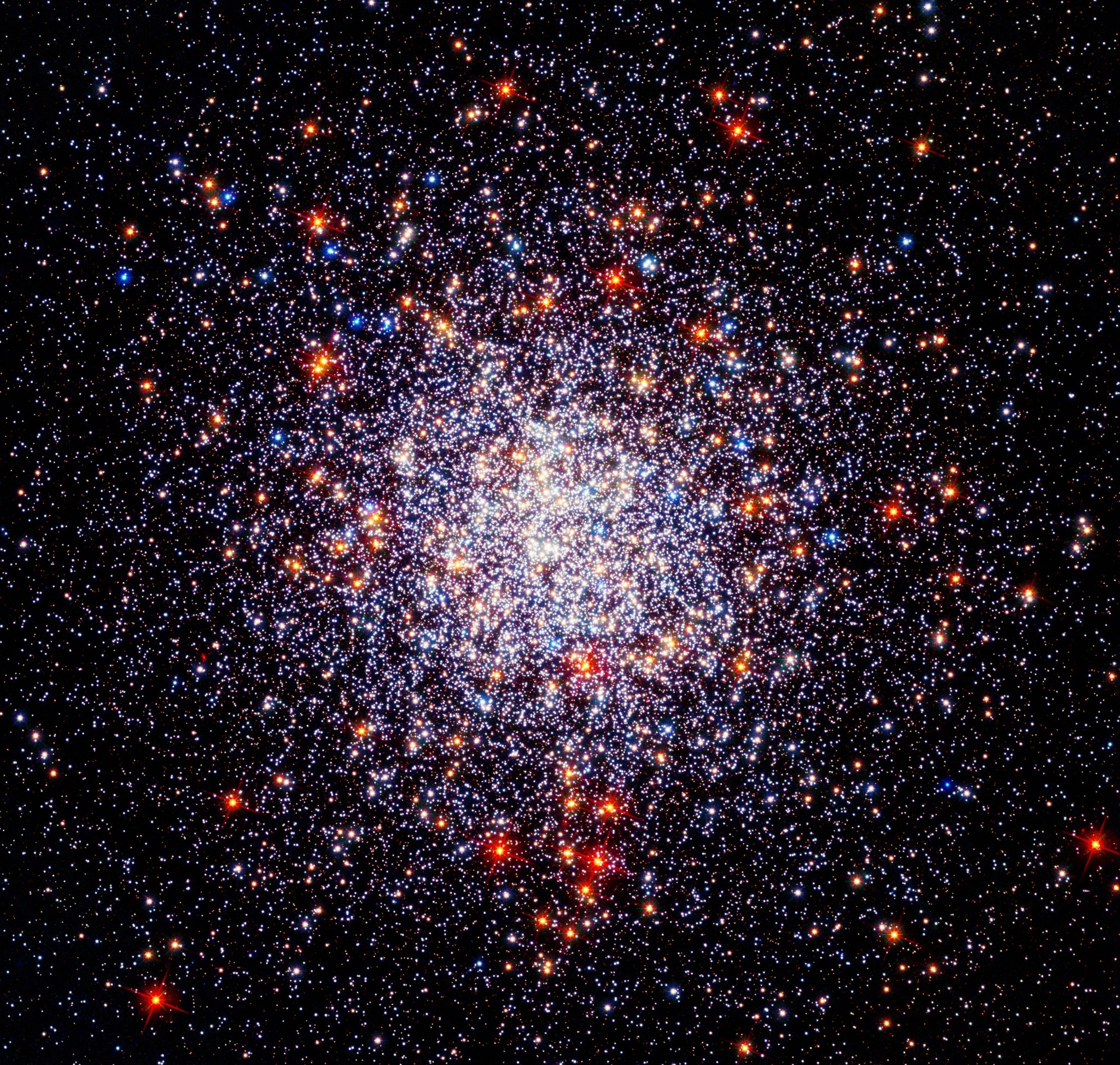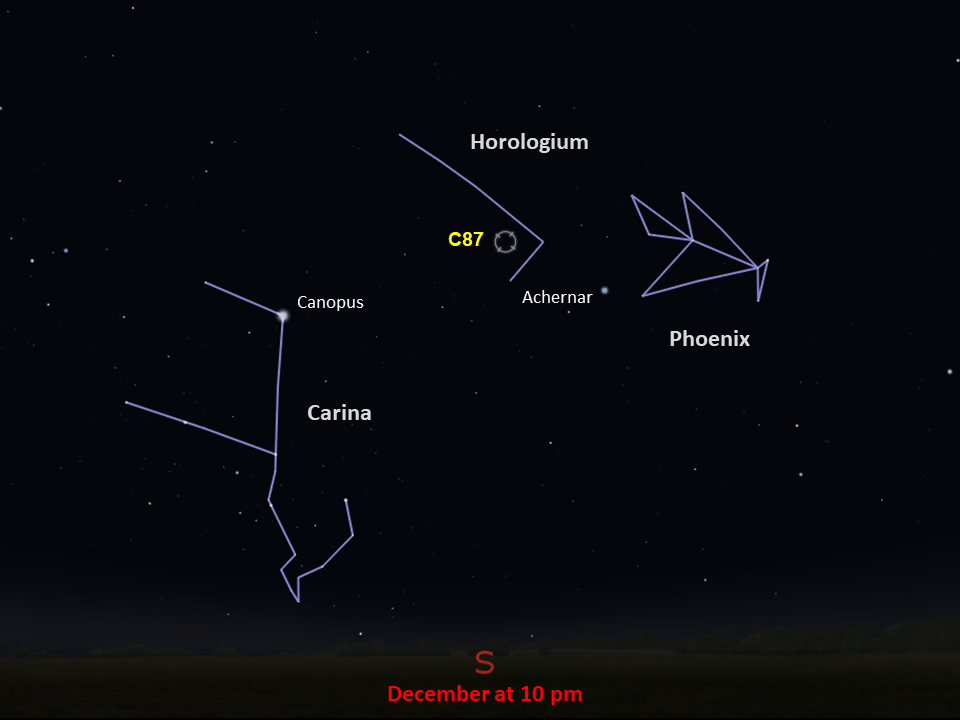Caldwell 87
This image combines observations from Hubble’s Wide Field Camera 3 in visible and ultraviolet light with infrared observations from its Advanced Camera for Surveys.
Distance
50,000 light-years
Apparent Magnitude
8.3
constellation
Horologium
object type
Globular Cluster
This image of the globular star cluster Caldwell 87 (or NGC 1261) combines observations made by Hubble’s Wide Field Camera 3 in visible and ultraviolet light along with infrared observations from its Advanced Camera for Surveys. The observations helped astronomers track the motions of the cluster’s stars and better understand the stars’ chemical abundances.
In the past, astronomers thought that all the stars in a globular cluster had similar ages and similar chemical abundances. However, recent studies suggest that this might not be true. It seems as though many globular clusters contain stars with varying chemical abundances, suggesting the stars are different ages. Hubble’s observations of Caldwell 87 have allowed astronomers to investigate this further.
Discovered in 1826 by the Scottish astronomer James Dunlop, Caldwell 87 is located roughly 50,000 light-years from Earth in the constellation Horologium. It has an apparent magnitude of 8.3, and a small telescope is needed to spot it in the night sky. The cluster is best observed in the late spring from the Southern Hemisphere (or in the late autumn from southern latitudes in the Northern Hemisphere).
Glossary
Apparent Magnitude - The brightness of an astronomical object as seen from Earth, influenced by the object's distance from Earth, its absolute magnitude, and even gas and dust that lie between the object and Earth.
Globular Cluster - A spherical group of stars that are gravitationally bound to each other, with most of the stars concentrated at the cluster’s center.
Explore Hubble's Caldwell Catalog
The following pages contain some of Hubble’s best images of Caldwell objects.
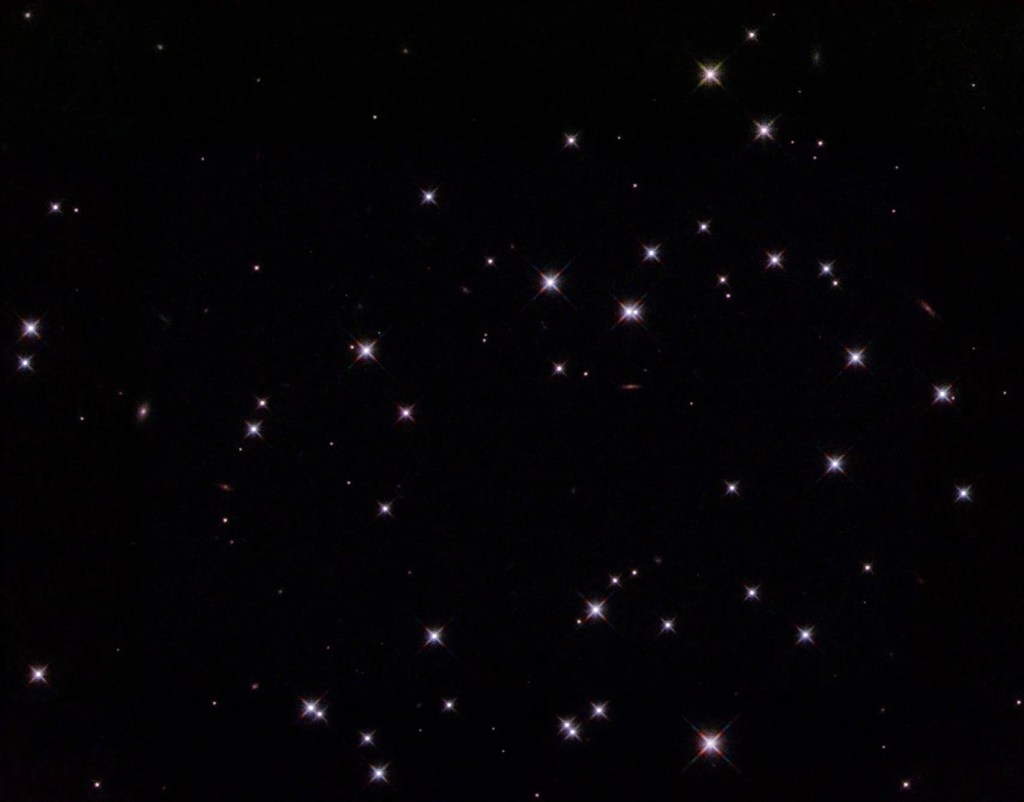
Also known as NGC 188, this group of stars formed from a large cloud of gas making the stars roughly…
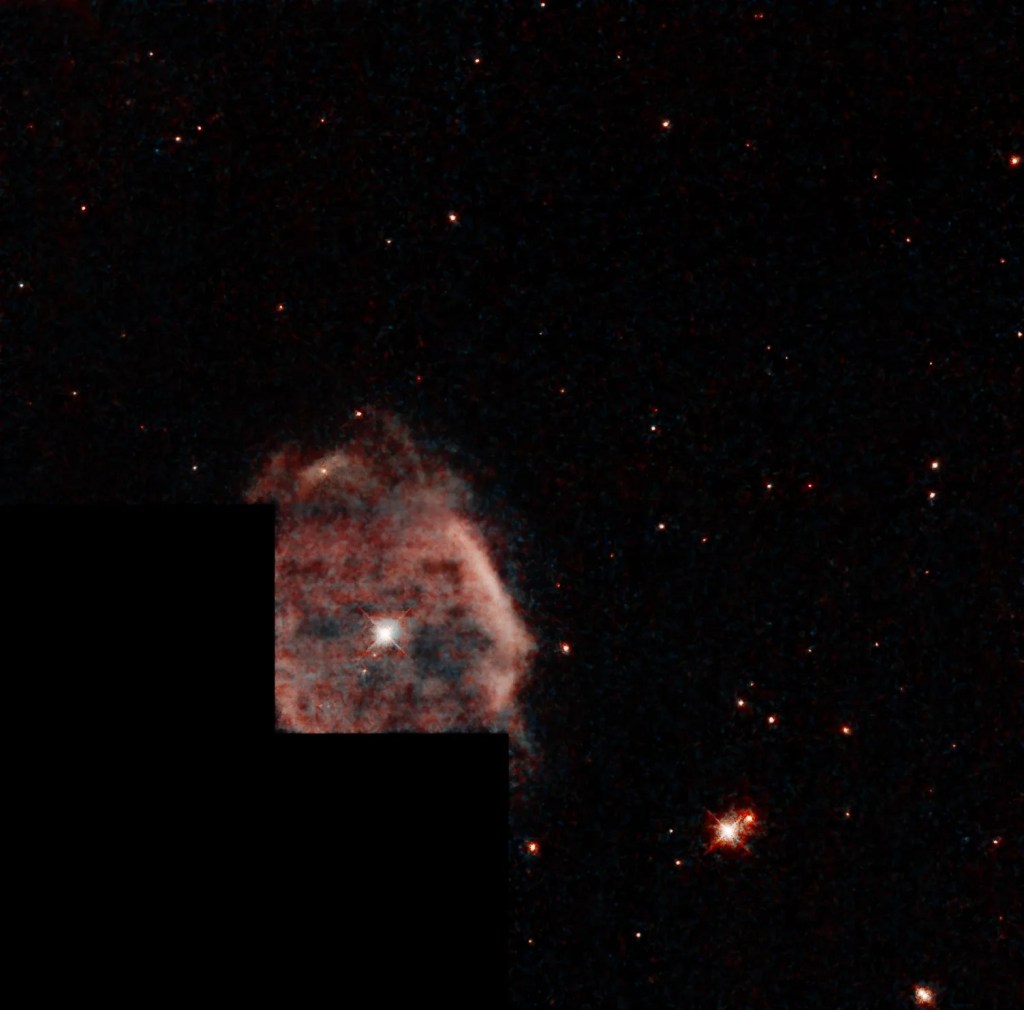
This shell of gas is expanding outward, away from the dying star within.
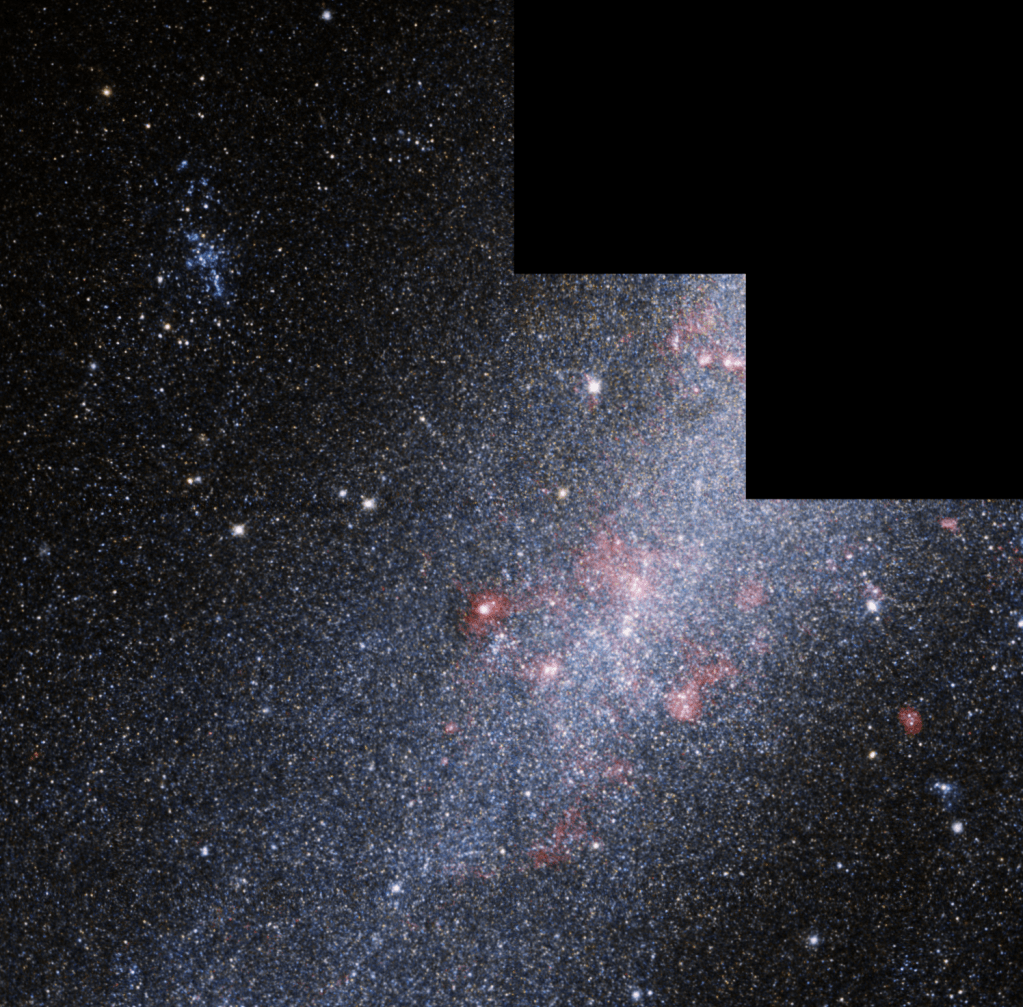
This barred spiral galaxy was first spotted by British astronomer William Herschel in April 1793 in the constellation Draco.




























